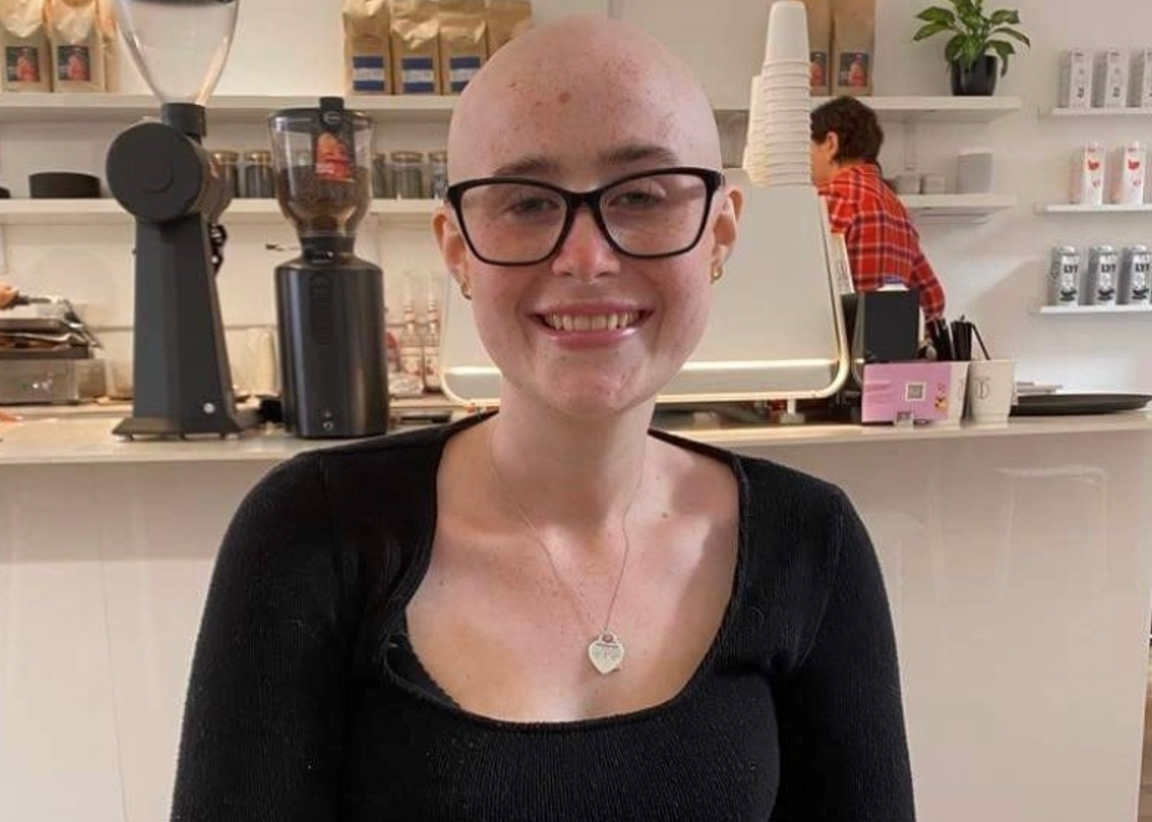Approaching a Cancer Diagnosis With Support
- 22-year-old Molly Doyle thought she was experiencing a pulled muscle before she was diagnosed with Ewing sarcoma.
- The college student, who is grateful for her family and friends’ ongoing support, went through 13 rounds of chemotherapy, proton beam therapy, and surgery to get rid of the sarcoma.
- Ewing sarcoma is a type of sarcoma that occurs in bones or in the soft tissue surrounding the bones, and "lifelong monitoring" is generally recommended after treatment for the disease.
- Treatment for Ewing sarcoma depends on the location of cancer and the size of the tumor at the time of diagnosis. A doctor's treatment plan may involve a combination of chemotherapy, radiation, and surgery.
“One week it would be really bad and I couldn’t leave the house because I’d struggle to walk but then I’d go to bed one night and the next day I’d be completely fine and there’d be no pain at all,” the Liverpool University student told North Wales Live.
Read More
Doyle, a psychology major, needed 13 rounds of chemotherapy, proton beam therapy, and surgery to get rid of the sarcoma. She received treatment at the Clatterbridge Cancer Centre’s Teenage and Young Adult Unit, where she was allowed family and friends to visit and support her through the month’s-long care process. Now that she is cancer-free, Doyle will soon return to her studies, as she’s contemplating a career in mental health services, to help other young adults with cancer.
Her interview comes as July was Supporting Sarcoma Awareness Month. Doyle hopes her cancer diagnosis can help other young people “advocate for themselves” when they feel unusual symptoms. She explains “I’m a big believer that you know your body best and you know when something’s wrong. I know young people sometimes worry that they’re wasting people’s time but you definitely need to talk to someone if you notice anything that isn't normal for you or seems to change over time because it might be nothing but finding out early could save your life.”
Dr. Nasim Ali, of The Clatterbridge Cancer Centre where Doyle was treated, told North Wales Live that Sarcoma is more common in younger people because “symptoms can often be vague at first, can often be overlooked particularly when someone is otherwise young, fit and healthy. Ali advises anyone with constant pain or swelling to make an appointment with their doctor.
What are Sarcomas?
Sarcoma is a term used to describe an array of more than 70 rare cancers that begin in the bones and the soft tissues. This diverse group of diseases account for only about one percent of tumors in adults and just over 10% of tumors in children.
RELATED: What Are Sarcomas? Know the Types and Symptoms of These Rare Cancers
The main symptom of sarcomas is generally a slow-growing, painless mass, but symptoms can be hard to detect as soft tissue sarcomas are typically painless and bone sarcomas can be mistakenly diagnosed as orthopedic injuries.
"Unfortunately, most sarcomas do not cause many of the symptoms that may be associated with other cancers," Dr. Dale Shepard, director of the Cleveland Clinic Taussig Cancer Institute Phase I and Sarcoma Programs, tells SurvivorNet. "A mass the size of a golf ball or larger and growing should be evaluated as a potential sarcoma. It's important that patients who do have symptoms are not dismissive of them."
Understanding Ewing Sarcoma
Ewing sarcoma is a specific type of cancer that occurs in bones or in the soft tissue surrounding the bones. It is most commonly found in adolescents, but younger children, as well as adults (in their 20s and 30s) can also be diagnosed with this disease.
According to the Mayo Clinic, some signs and symptoms of Ewing sarcoma include:
- Pain, swelling or tenderness near the affected area
- Bone pain
- Unexplained tiredness
- Fever with no known cause
- Losing weight without trying
Treatment for Ewing sarcoma depends on the location of cancer and the size of the tumor at the time of diagnosis. A doctor's treatment plan may involve a combination of chemotherapy, radiation, and surgery. Sometimes the aggressive nature of these treatments can cause both short-term and long-term side effects. According to the Mayo Clinic, "lifelong monitoring is recommended" after completing treatment to watch for potential late effects of the intense treatment.
Getting the Emotional Support You Need "I Feel Very Lucky That I Was Diagnosed In Portland"
Contributing: SurvivorNet Staff
Learn more about SurvivorNet's rigorous medical review process.


